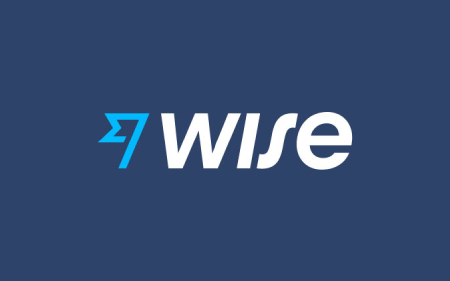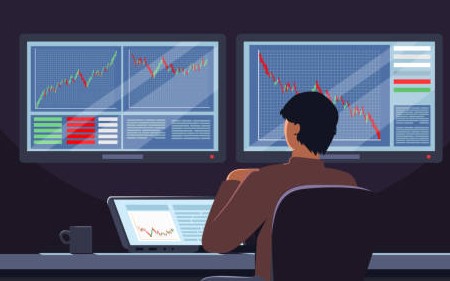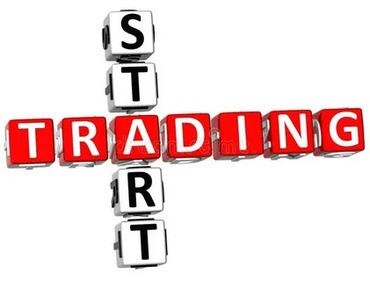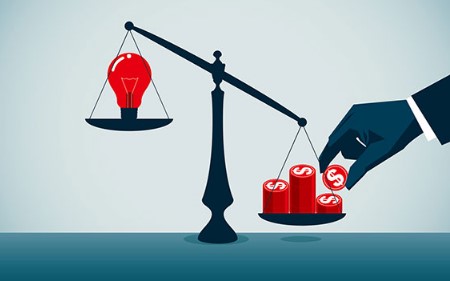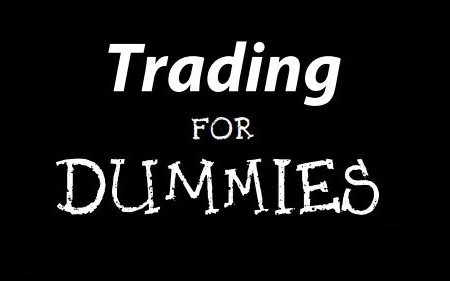How to choose a mutual fund to invest?
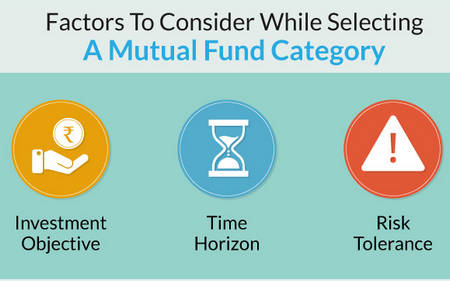 03 / 03 / 22
Visitors: 598
03 / 03 / 22
Visitors: 598
How to properly invest in the mutual fund? How effective is investing in mutual funds? What can be risky investments in mutual funds? The answers to these and other questions can be found in this article.
Comparative analysis of mutual and corporate funds
Investment funds or collective investment institutions in their organizational and legal form are divided into:
- corporate investment funds;
- mutual funds.
Corporate and mutual funds, in turn, depending on the order of activities are divided into:
- open-end investment funds;
- closed-end investment funds;
- interval investment funds.
Open-end and interval investment funds, depending on the term for which they are created, are divided into:
- term open-end / interval investment funds;
- perpetual open-end / interval investment funds.
Closed-end investment funds are divided into:
- diversified closed-end investment funds
- non-diversified closed-end investment funds
Non-diversified investment funds, in turn, can be venture or non-venture.
How to understand such diversity for the investor and, most importantly, which investment fund to prefer?
To begin with, we compare corporate and mutual funds
Legal form:
Corporate Investment Fund: Is a legal entity, created in the form of an open joint stock company, more than 70% of the average annual value of assets - securities
Mutual investment fund: Not a legal entity, the assets belong to investors on the right of joint partial ownership
Opportunity for investors to participate in fund management:
- Corporate investment fund: Yes, the governing bodies are: the general meeting of shareholders and the supervisory board
- Mutual Investment Fund: None, but if funds are raised through a private offering, depositors can set up a supervisory board
Who can be a member of an investment fund ?
Corporate investment fund: Individuals and legal entities, in venture funds - only legal entities
Mutual investment fund: Individuals and legal entities, in non-diversified - only legal entities
Relationship with the asset management company:
- Corporate Investment Fund: Mutual (asset management agreement)
- Mutual Investment Fund: Created by an asset management company
What securities does it issue:
- Corporate Investment Fund: Ordinary Registered Shares (Issuer - CIF)
- Mutual Investment Fund: Investment Certificates (Issuer - AMC)
Possibility to receive dividends:
- Corporate investment fund: yes
- Mutual investment fund: Available only in closed-end mutual funds
AMC replacement and liquidation:
- Corporate Investment Fund: The Securities and Stock Market Commission may initiate liquidation proceedings in court. The decision to replace the AMC is made by the general meeting of shareholders
- Mutual Investment Fund: The Securities and Stock Market Commission may decide to replace the AMC or liquidate the fund. From the moment of the decision on liquidation the placement and issue of investment certificates is stopped
The order of satisfaction of depositors' claims in liquidation:
- Corporate investment fund: First of all - shareholders who are not founders
- Mutual investment fund: First of all - depositors who have applied for redemption of investment certificates before the decision on liquidation; other investors - only the fourth turn
It should be borne in mind that corporate investment funds are often closed-end non-diversified.
Comparative characteristics of open-end, interval and closed-end investment funds:
Redemption of securities
- Open-end investment fund on any business day; the minimum number of securities purchased by the investor may be set
- Interval investment fund On the days specified in the issue prospectus, but not less than once a year
- Closed-end investment fund After the expiration of the term for which the investment fund was established
Term of existence
- Open-end investment fund can be urgent or indefinite
- Interval investment fund Can be urgent and indefinite
- Closed-end investment fund can only be urgent
Diversification
- Open-end investment fund can only be diversified
- Interval investment fund can only be diversified
Closed-end investment fund Can be diversified and non-diversified (venture and non-venture)
Asset structure
Open-end investment fund Not less than 10% - cash, for diversified - only securities and cash, of which not more than 20% of securities that are not admitted to trading on the stock exchange or in the trade information system
Interval investment fund Not less than 10% - cash, for diversified - only securities and cash, of which not more than 20% of securities that are not admitted to trading on the stock exchange or in the trade information system
open-end investment fund The same requirements for diversified, for non-diversified - no more than 50% of securities that are not admitted to trading on the stock exchange or in the trade information system + real estate; for venture capital - 100% of securities may not be admitted to trading, the structure of assets may include debt obligations
Determining the value of net assets
- Open-end investment fund Every working day
- Interval investment fund At the end of the business day before redemption, but not less than once a quarter
- Closed-end investment fund At the end of the business day before redemption, but not less than once a quarter
Circulation of securities
Open-end investment fund Limited: alienation is carried out only by redemption of AMC, alienation to third parties is allowed only in case of succession, inheritance and gift
- Interval investment fund - Not limited
- Closed-end investment fund - Not limited
Advantages of investing in an open-end mutual investment fund :
- low risk (the law sets strict requirements for the structure of assets and restrictions on investment objects);
- the possibility of redemption of securities at any time;
- as a rule, the low amount of AMC remuneration;
- low nominal value of investment certificates (although sometimes a minimum number of certificates for investment is set.
Disadvantages of investing in open-end mutual funds:
- low profitability compared to other types of investment funds;
- limited circulation of securities of open-end investment funds.
Advantages of investing in an interval mutual fund:
- low risk (according to the law, can only be diversified);
- profitability is slightly higher than in open-end investment funds;
- the circulation of securities of such investment funds is not limited by law.
Disadvantages of investing in interval mutual funds:
- the possibility of redemption of securities is provided only on strictly defined days, this day may fall in the midst of the crisis;
- Privatization certificates used to be accumulated and created for these purposes, but now they are not so interesting for investors.
Advantages of investments in a closed-end mutual investment fund in:
- the highest return compared to other types of investment funds;
- free circulation of securities on the market.
Disadvantages of investing in closed-end mutual funds:
- the highest risks (closed-end investment funds are usually non-diversified);
- redemption of securities by the fund is carried out only after the expiration of its validity;
- dividends paid at the end of the term may not keep up with inflation;
- the nominal value of securities is higher than in other types of investment funds;
- AMC's remuneration and premium are usually higher than in other types of funds.
When choosing the type and type of investment fund should take into account their capabilities and expectations from investing. Yes, you should not invest the last money in closed-end non-diversified investment funds in the hope of huge profits, as there is a serious risk not only of not getting rich, but also of losses. Expecting a quick return, it is better to choose an open or interval investment fund, for long-term - closed. If there is no possibility and desire to constantly monitor the quotations of shares in the market, again, it is better to focus on less risky funds, etc. And although the investor can not always influence the level of their income, he is always free in his right to choose the object of investment.
The activities of investment funds are regulated by the law
The profitability of a fund depends on its investment strategy and the assets in which the fund's money is invested. There is no official classification of funds according to their assets (or direction of investment, but it will be useful for a potential investor to know that investment funds include equity funds, bonds, money market funds, balanced and index funds.
- Equity funds - the fund's funds are invested mainly in shares.
- Bond funds - invest mainly in government, municipal and corporate bonds
Money market funds - a significant part of their assets are distributed among money market instruments, primarily deposits and bonds.
Balanced funds - their assets include stocks, bonds and deposits. At the same time, such funds often invest in shares of the second and third tier, which allows to increase potential profitability, and high risks are offset by investments in fixed income instruments - deposits and bonds
Index funds - the structure of their assets repeats the composition of the indices of stock exchanges. In fact, these are also equity funds, but only those included in the index basket
Obviously, this division is quite conditional: for example, bonds in their investment strategy can use both bond funds and balanced or money market funds, and equity funds can also invest part of the funds in deposits or other securities.
There are more specific types of funds: for example, those who invest in real estate or artistic values, but they are not yet widespread. But there are funds with a mixed strategy. Their funds are distributed among various assets, such as stocks and real estate.
It is not difficult to find out to which type a fund belongs: often this information is already contained in its name. If not, then information about the investment strategy of the fund and what assets are invested in it, you can find on the website of the asset management company.
How to choose an investment fund?
Regardless of the stock market situation and the investment strategy you prefer, there are a number of indicators that an investor should pay attention to in the first place when choosing an investment fund.
Once you have decided on the type of fund, or even before, you should compare the funds operating in the market, on several indicators. When choosing an investment fund, the investor should look at the historical profitability, and the management company, and the structure of assets. Not the last role in this list is played by the company's reputation. In fact, the investor's choice is relatively small, as there are about five or six reputable companies that manage large funds.
As for the profitability of the fund, then a potential investor should not focus on the figures of the last year, let alone the month. It is best to assess the profitability of the fund from the beginning of its operation - so you can compare what results the fund showed in different states of the stock market. It is necessary to look at the historical average annual return since the formation of the fund, compare this return with the average market return for this class of funds.
After that, it is worth assessing the composition of the fund's investment portfolio. The structure of the fund should look at the presence of illiquid securities that are poorly traded. Unfortunately, some shares of even well-known companies may be illiquid on the stock market, so you should seek professional advice. If you are not able to get any information about which securities the fund is invested in, it is also better to refrain from participating in it.
Finally, if you have chosen several funds with a fairly high average return, a reputable management company and you understand the composition of the investment portfolio, you should compare the rates and commissions you have to pay when buying an investment certificate or shares of the fund.
Precautions
To avoid all sorts of problems and surprises, when choosing investment certificates you need to look at the terms of purchase and terms of sale. And then - you can control the actions of the AMC to manage the fund. All investors of the fund form the so-called supervisory board, ie any of the investors can participate in checking how the AMC complies with the regulations of the fund and the investment declaration. And the law protected UIF investors from all sorts of abuses in a very simple way. The investment fund's accounts do not belong to the AMC, and all funds in the accounts belong to the fund. And the bank that keeps these funds, in accordance with our legislation, acts as a kind of police officer, whether the lawful transactions with the funds of the fund, or properly spent. Each AMC order on the use of the fund's funds is checked by the bank for compliance with a special investment project of the mutual fund, registered by it with the State Commission on Securities and Stock Market.
How to get rid of a share?
If the investor decides that he will have enough and needs to sell his contribution, it will not always be easy for him to do so. Applying to the investment fund, the money is likely to be received not immediately, but within 2-3 banking days. If the client is in a hurry, he can sell his share on the open market by selling it to brokers or other investment companies.
However, the latter are likely to buy a share at face value or at a discount from the market price of 20-30% - so, it is still better to sell it to the fund. But do not forget that the fund will require you a fee for withdrawal - the same 1-2% - and for the maintenance of AMC - 2% of the value of the unit. Plus, you have to pay income tax on investment income received after leaving the fund. Of course, you may not pay the tax, but in the future, if the tax detects this default when filing a tax return, you may be in trouble.
Experts recommend not to twitch if the market began to fall and the value of net assets per share of the investment fund is steadily declining. After all, it is not so easy to sell your share quickly, and it is possible that from the moment of sale the market will sag even more. It is worth noting that the stock market is sinusoidal - it falls, it rises. Long-term downward or upward trends are rare. So the best option is not to get nervous and wait for the market to rise and the peak of the fund's profitability to grow.
A complete list of unscrupulous brokers, that we do not recommend working with is available here.



